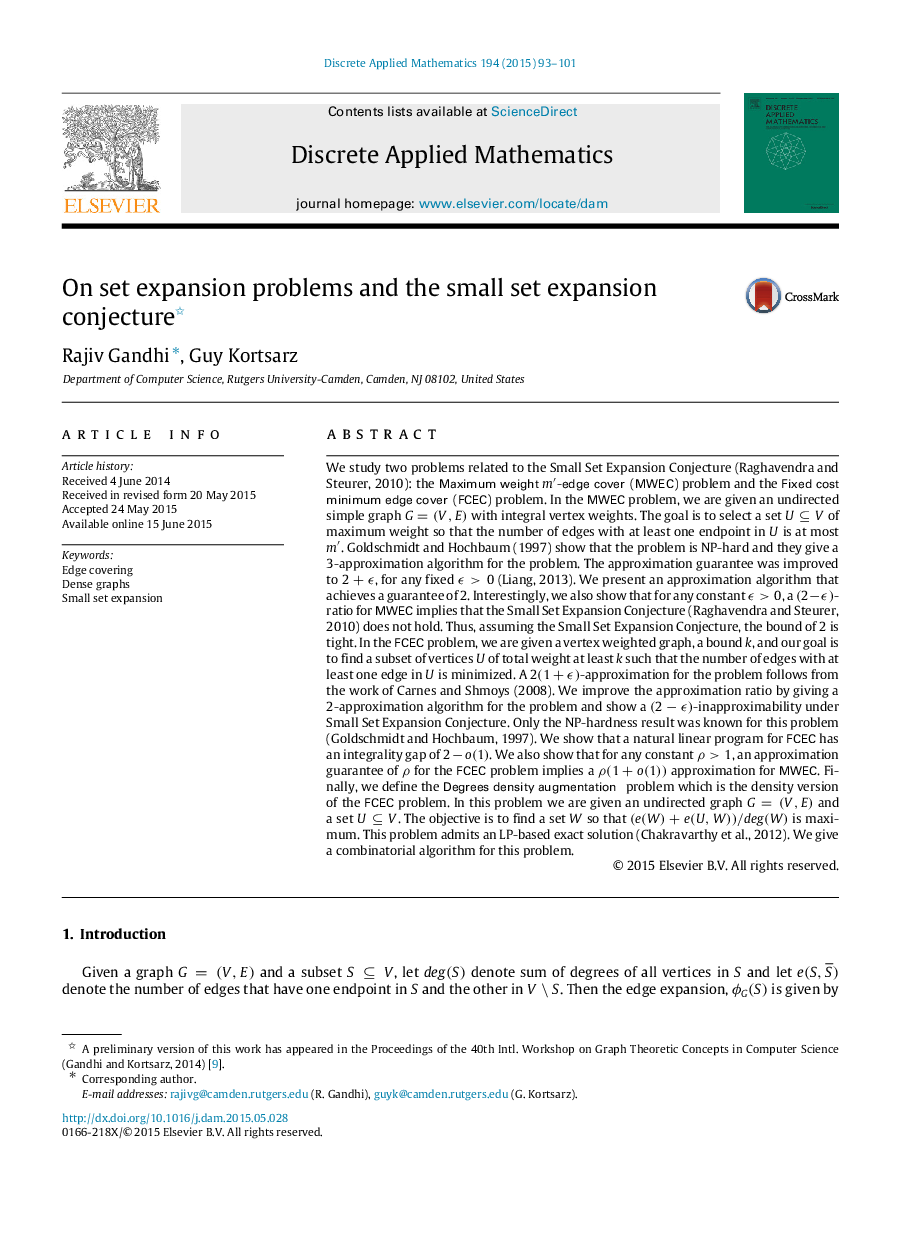| کد مقاله | کد نشریه | سال انتشار | مقاله انگلیسی | نسخه تمام متن |
|---|---|---|---|---|
| 418593 | 681693 | 2015 | 9 صفحه PDF | دانلود رایگان |
We study two problems related to the Small Set Expansion Conjecture (Raghavendra and Steurer, 2010): the Maximum weightm′m′-edge cover (MWEC) problem and the Fixed cost minimum edge cover (FCEC) problem. In the MWEC problem, we are given an undirected simple graph G=(V,E)G=(V,E) with integral vertex weights. The goal is to select a set U⊆VU⊆V of maximum weight so that the number of edges with at least one endpoint in UU is at most m′m′. Goldschmidt and Hochbaum (1997) show that the problem is NP-hard and they give a 3-approximation algorithm for the problem. The approximation guarantee was improved to 2+ϵ2+ϵ, for any fixed ϵ>0ϵ>0 (Liang, 2013). We present an approximation algorithm that achieves a guarantee of 2. Interestingly, we also show that for any constant ϵ>0ϵ>0, a (2−ϵ)(2−ϵ)-ratio for MWEC implies that the Small Set Expansion Conjecture (Raghavendra and Steurer, 2010) does not hold. Thus, assuming the Small Set Expansion Conjecture, the bound of 2 is tight. In the FCEC problem, we are given a vertex weighted graph, a bound kk, and our goal is to find a subset of vertices UU of total weight at least kk such that the number of edges with at least one edge in UU is minimized. A 2(1+ϵ)2(1+ϵ)-approximation for the problem follows from the work of Carnes and Shmoys (2008). We improve the approximation ratio by giving a 2-approximation algorithm for the problem and show a (2−ϵ)(2−ϵ)-inapproximability under Small Set Expansion Conjecture. Only the NP-hardness result was known for this problem (Goldschmidt and Hochbaum, 1997). We show that a natural linear program for FCEC has an integrality gap of 2−o(1)2−o(1). We also show that for any constant ρ>1ρ>1, an approximation guarantee of ρρ for the FCEC problem implies a ρ(1+o(1))ρ(1+o(1)) approximation for MWEC. Finally, we define the Degrees density augmentation problem which is the density version of the FCEC problem. In this problem we are given an undirected graph G=(V,E)G=(V,E) and a set U⊆VU⊆V. The objective is to find a set WW so that (e(W)+e(U,W))/deg(W)(e(W)+e(U,W))/deg(W) is maximum. This problem admits an LP-based exact solution (Chakravarthy et al., 2012). We give a combinatorial algorithm for this problem.
Journal: Discrete Applied Mathematics - Volume 194, 30 October 2015, Pages 93–101
